There are two types of hobnails. Both are hard. Both are arranged in patterns. One is made of metal and was used in boots and horseshoes to give traction.* The other kind of hobnails are made of glass; they’re small pointed or round nubbles decorating a glass or ceramic vessel. And though hobnail glass is hard, it is also one of the most sweetness-and-charm exuding glass patterns ever made.
Why hobnail glass is a classic
It has been popular for over 80 years. There are vintage pieces from the every decade of the 20th century and modern pieces sold at big box stores. Hobnails are a small detail, but they add visual interest and have become an essential for cottage style.
A History of hobnail glass
There’s a lot of vintage hobnail out in the world, and that’s because lots of companies made the pattern. It’s older than you might imagine. Here are some of the makers of note, this is by no means a comprehensive list.
A. J. Beatty and Sons made hobnail glass as far back as 1850, including this pretty little toothpick holder, c 1887.
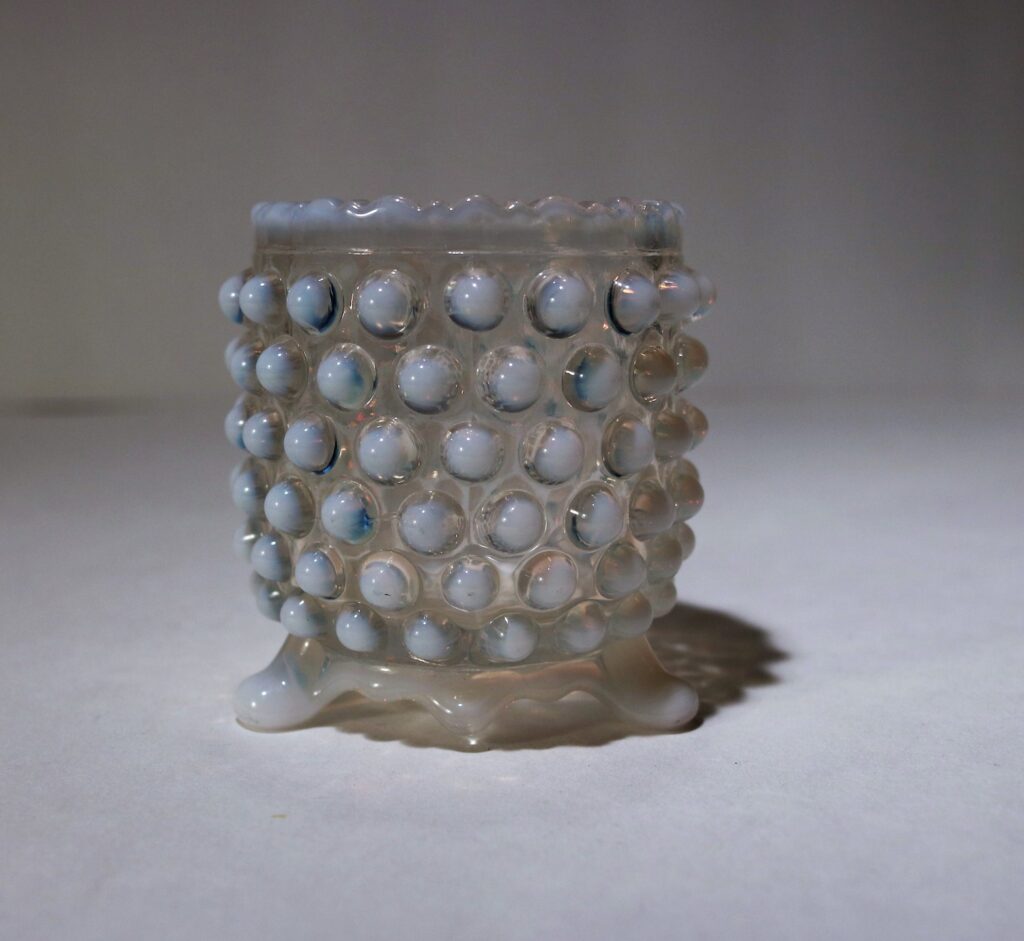
Duncan and Miller glass introduced a Hobnail pattern glass line that they made from 1930-1955.
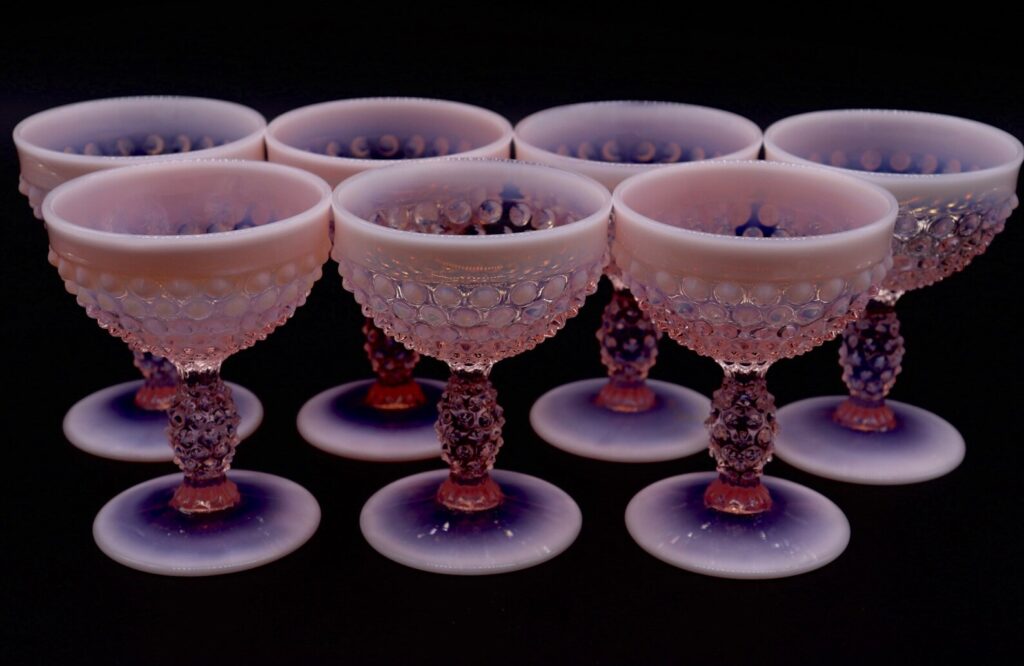
Imperial Glass made their Early American Hobnail pattern starting in 1930 in myriad colors including carnival. They made Hobnail milk glass from 1956-1978.

Anchor Hocking introduced their clear glass Hobnail pattern in 1934 and made it until 1936. Their lovely Moonstone opalescent was in production from 1942-1946, it’s very similar to Fenton’s French Opalescent although they are easy to tell apart if you’re holding them. Fenton’s hobs are sharp and Anchor Hocking’s are rounded. This may be a sweeping generalization, but a high proportion of milk Hobnail glass you find at thrift stores was made by Anchor Hocking.
The Hobnail pattern was introduced by the Fenton Glass company in 1938. Fenton was the largest player in Hobnail art glass, with fabulous colors and exquisite production. Their early pieces were in opalescent glass patterns–a transparent colored glass with a more opaque white glass added at the rim–as shown in these pages from the 1940 catalog. (French opalescent is the clear glass with white.)
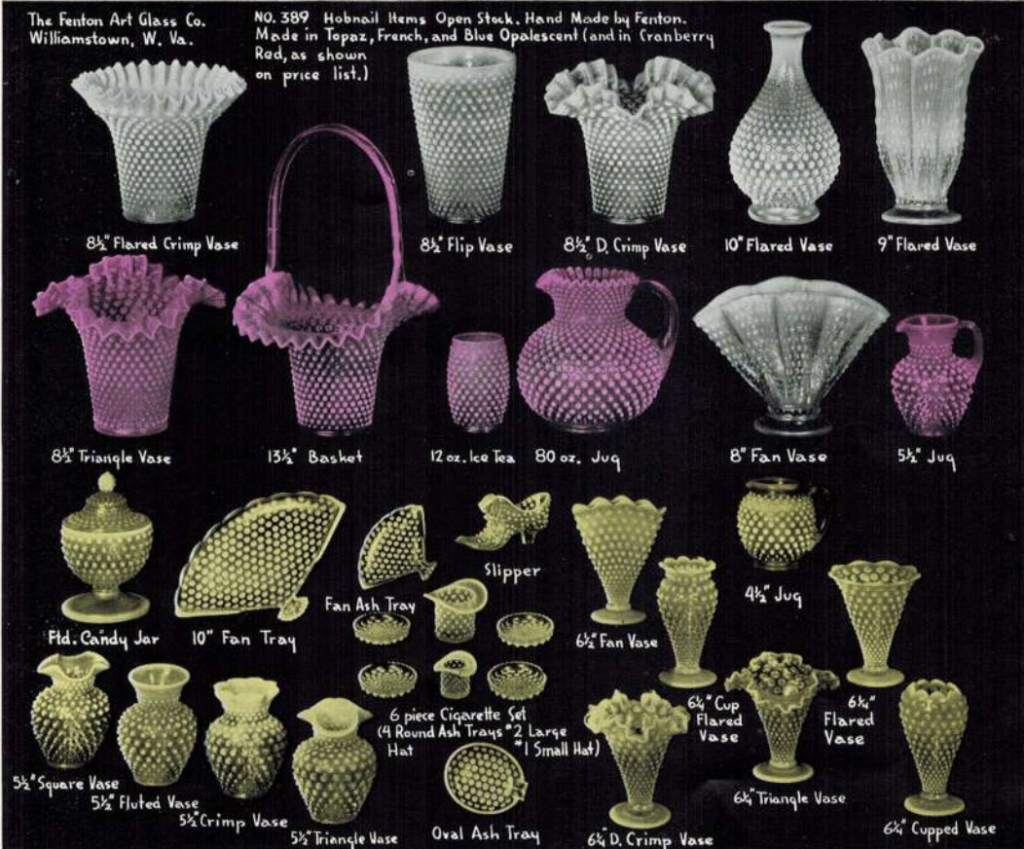
It wasn’t until 1952 that the Hobnail pattern was made in milk glass. The rest is history. Milk Hobnail became Fenton’s flagship, the most popular color and pattern the company ever made. Bill Fenton called milk Hobnail “our bread and butter line.”
By 1961, Hobnail filled 10 pages of a 22 page Fenton catalog, including these lovelies:
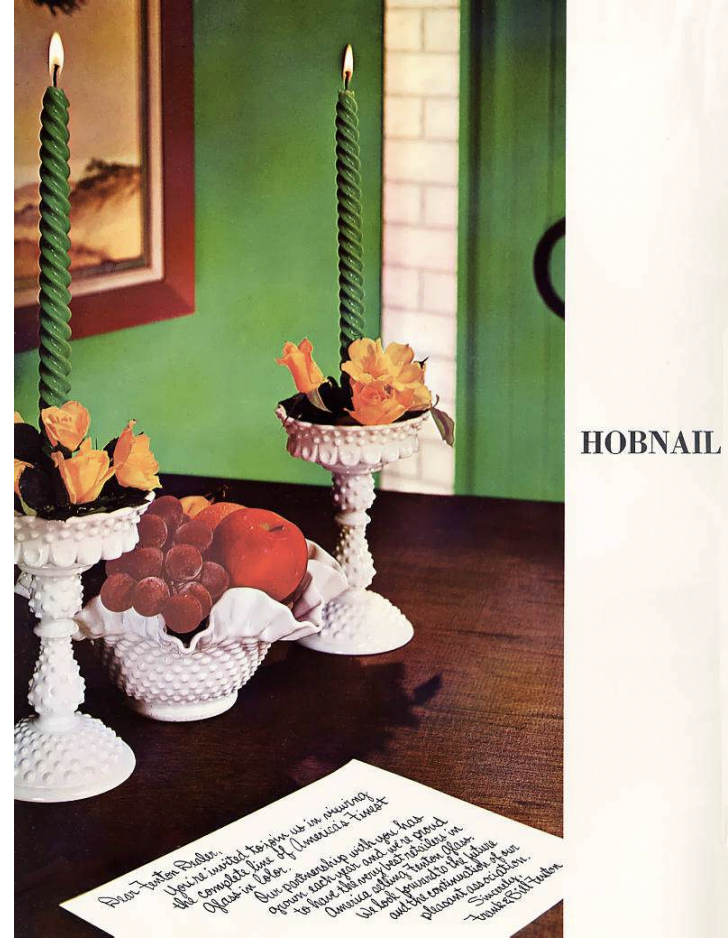
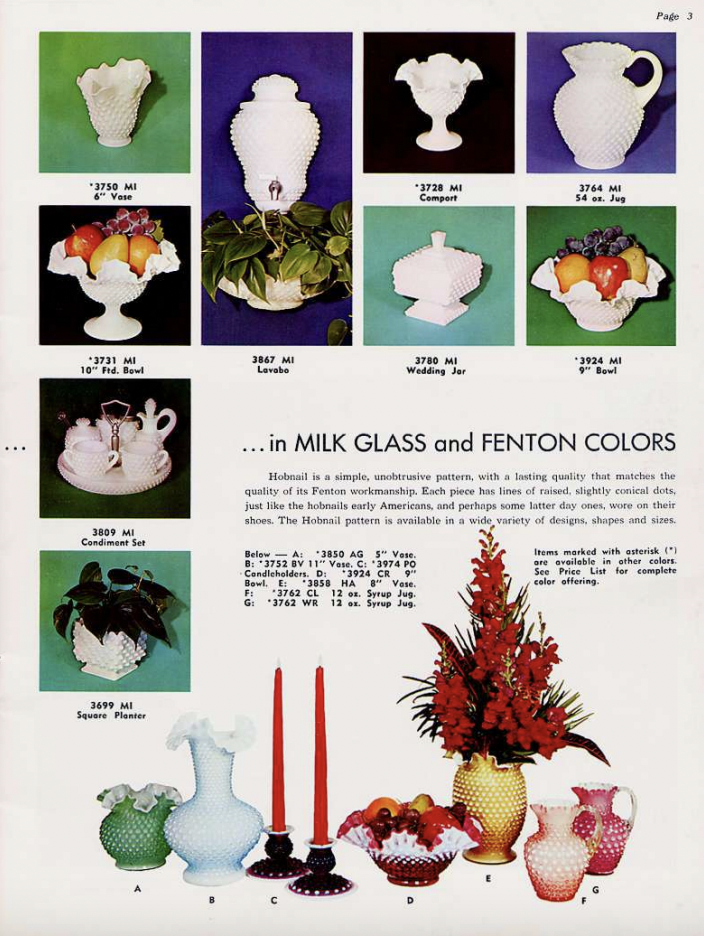
Westmoreland made a gridded pattern with square hobs called English Hobnail way back in 1928, but it didn’t really resemble the Hobnail we love. They introduced American Hobnail in milk in 1952.
Smith Glass produced their Hobnail Milk pattern starting in 1960, other colors were made earlier. Production continued into the 1980s.
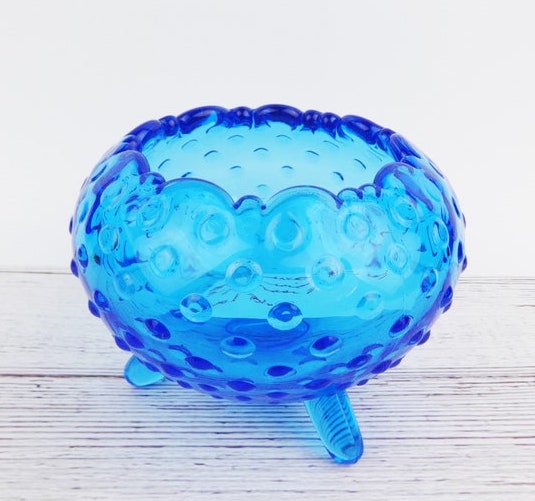
You need only go to a home decor store to realize that hobnail glass is still being made, including by Anthropologie and Pier 1. Don’t settle for a modern piece when you can have a vintage hobnail glass made by one of the elegant glass companies shown above like Fenton, Duncan and Miller, Westmoreland or Imperial Glass. The quality of those pieces outdistances modern pieces by miles. Spend your time at flea markets–true vintage will always be more satisfying than a reproduction.
Decorating with hobnail glass
It’s rare to visit a vintage or thrift store and not see this Anchor Hocking milk hobnail trumpet vase. Filled with ranunculus, like in this photo from Cottages and Bungalows, it is the personification of casual, fresh cottage style.
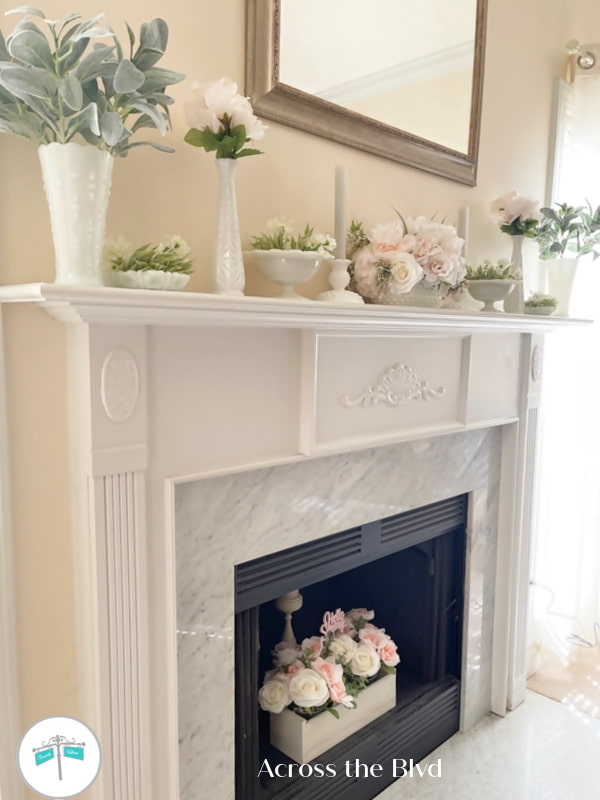
Beverly from acrosstheblvd.com decorates her mantel for spring with a combination of hobnail and plain milk glass. Her faintest blush peach walls and white moldings blend beautifully with the milk glass, looking fresh as, well, fresh as spring.

Colorful Fenton hobnail pieces arranged in an antique secretary by adirondackgirlathome.com. The mix of styles and colors is visually intriguing.
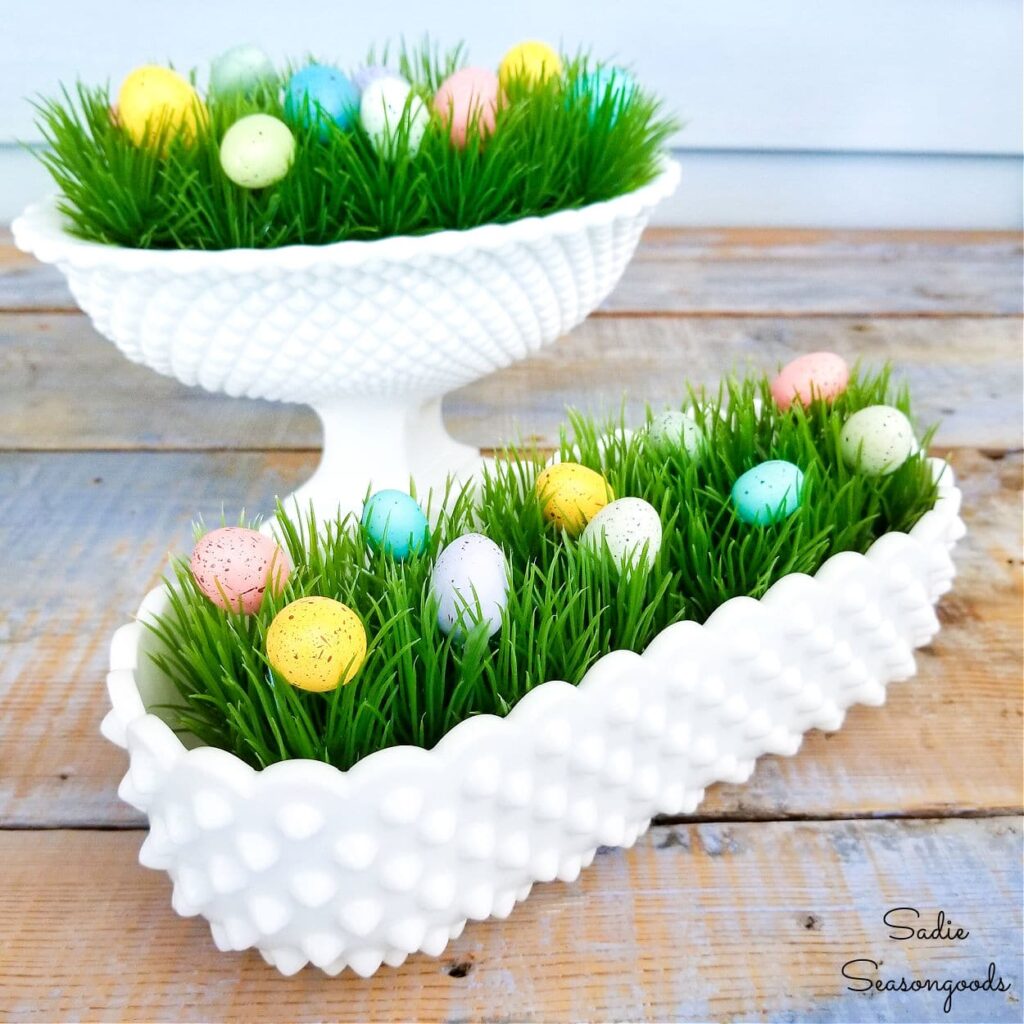
Sarah from SadieSeasongoods.com uses plastic grass matting to make spring happen in her thrifted Fenton and Westmoreland English Hobnail pieces.
This grouping of pink opalescent Fenton sold for $100 on ETBH.com. Imagine what you could do with these in your home…
*Hobnail-bottomed shoes are known to have existed as far back as ancient Rome. They were worn by troops during WWI, called “Pershing Boots.”
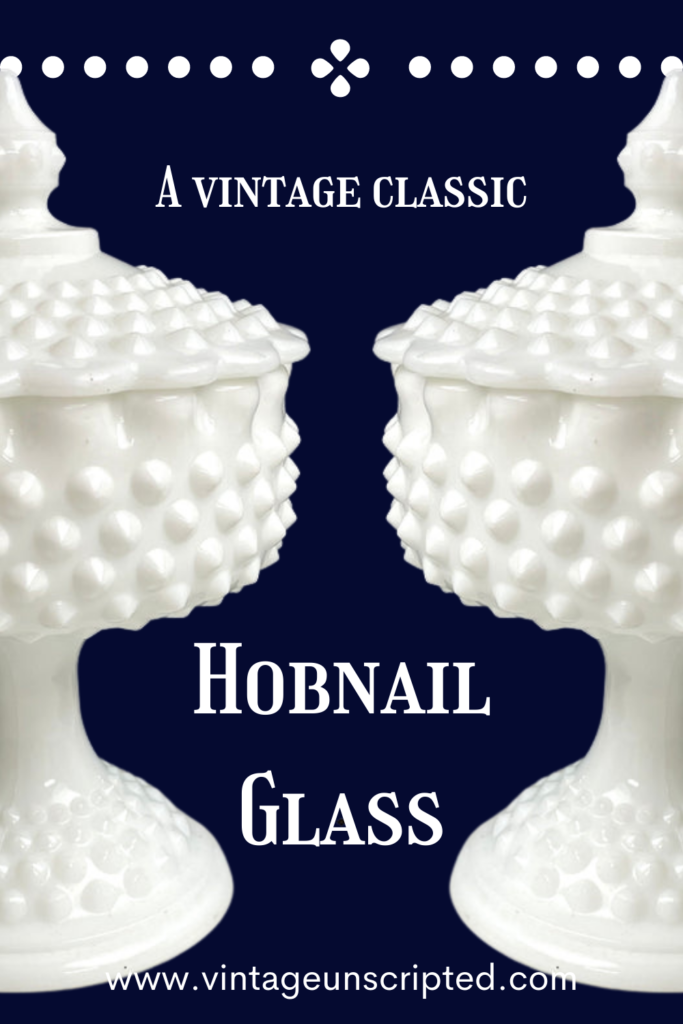

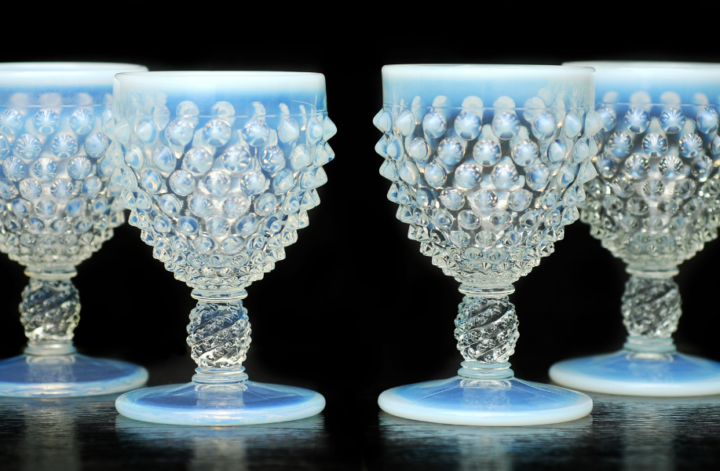
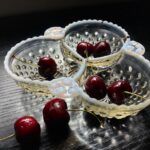

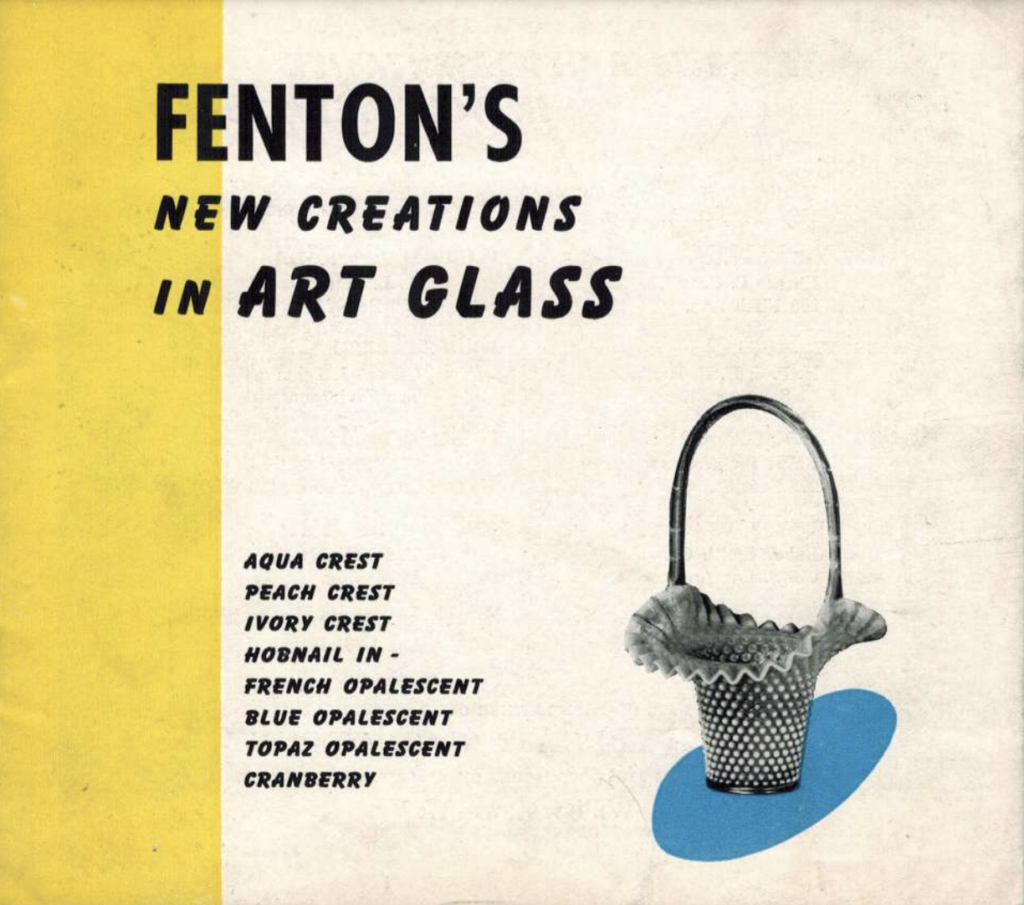
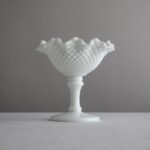
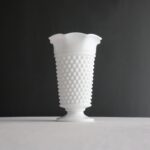
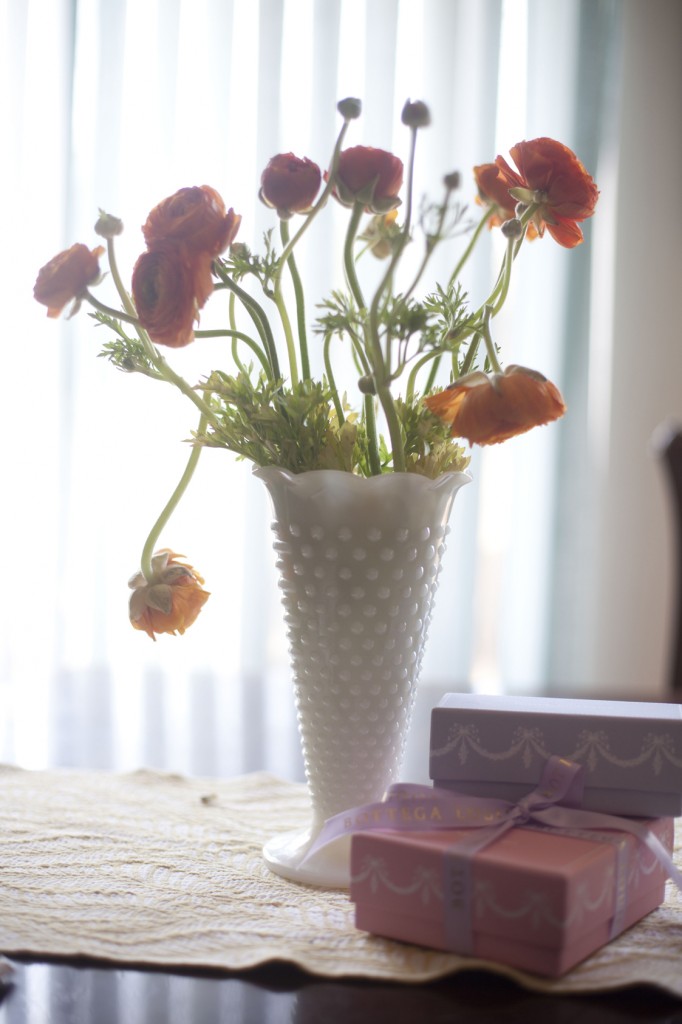
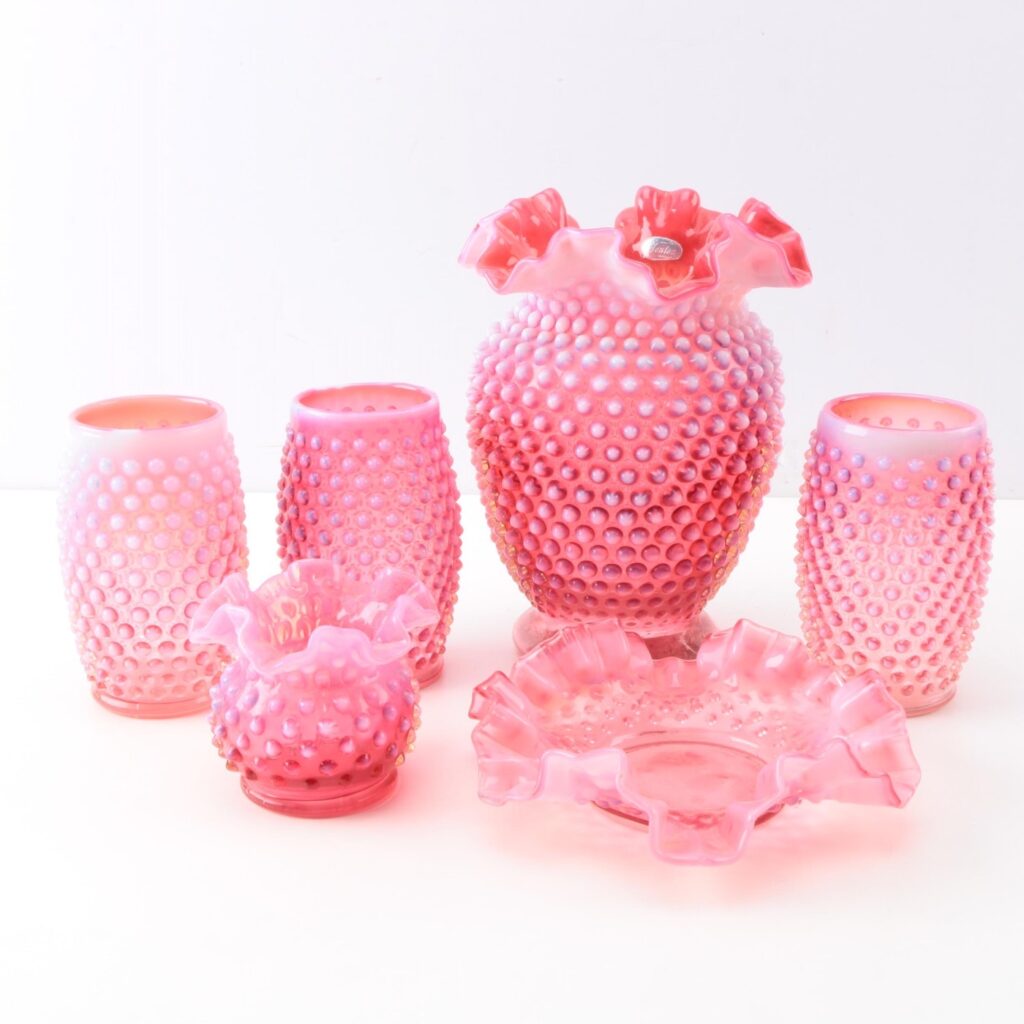

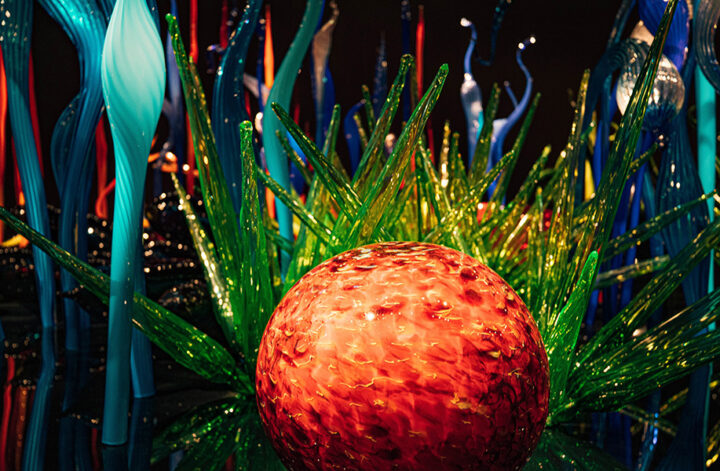

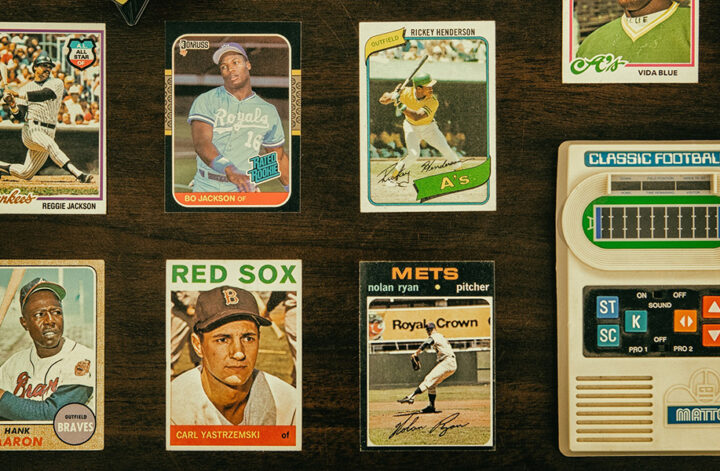
2 comments
Hi
Just looking at your sight, it very interesting, I was wondering if you could help identify a vase I have, just so I can learn information on it, I would love to know who made it and how old it may be, I’ve had it many years buying it from a little junk shop years ago, I love glass and collect it, what brings me to your site is one of your photos of the vase top photo, looks very similar to mine hope you can help
Hi Mandy,
Glad you find the blog interesting. It makes our crusty old vintage hearts beat with pride to hear that. As for your vase, we would probably not be much help, but we can steer you in the right direction. One trick I always use is to feel the hobs. If they are pointy, it is probably Fenton. If they are domed and round, they are probably not. There were lots of makers of hobnail glass. You may be able to find a good book on hobnail from your library.
Another first place to start is by using Google Lens. When you open Google on your phone or laptop, there’s a magnifying glass off to the right. That’s Google Lens, the visual search. On your phone, you can snap a picture of your vase and it will show you images that are similar along with links for them. On your laptop, you can click on the magnifying glass and drag a photo into the search box.
Good luck. Researching vintage can be a lot of fun.